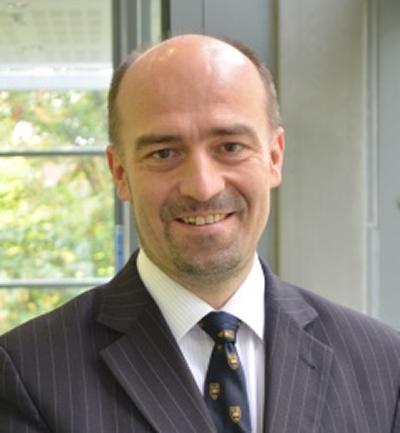Publications - Journal paper - academic journal
Publication Types:
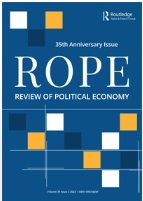
Deciphering the Chinese Economic Miracle: The Resolution of an Age-Old Economists’ Debate — and its Central Role in Rapid Economic Development
Abstract
We offer an account of China’s unparalleled economic rise by considering evidence on public banks and their role in decentralizing the resource allocation task of a growing economy. Chinese economic and banking history since the post-Mao reforms reveals an ingenious integration by the local policymakers of Currency (public money supply) and Banking School (decentralized money creation) policy recommendations previously thought incompatible, resulting in a social democracy with Chinese characteristics. Our theoretical and historical discussions offer policy insights into the constructive role of quantitative public bank easing in economic development
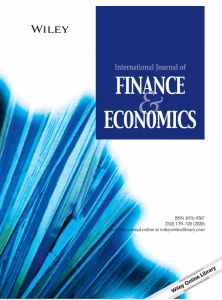
Are lower interest rates really associated with higher growth? New empirical evidence on the interest rate thesis from 19 countries.
Abstract
There is a substantial literature on the link between finance and growth. Empirical evidence remains inconclusive and the debate continues. In this paper, we adopt the research strategy of focusing on a narrower underlying issue that remains at the core of most macroeconomic theories, namely the interest rate thesis (that lower rates result in higher growth and vice versa). If there are problems with this relationship, this could explain the lack of consensus on the finance-growth nexus. The question is also of practical relevance: Central banks have been focusing on interest rate policy on the assumption that the interest rate thesis holds. There are theoretical reasons why this may not be the case. We conduct an analysis of time-varying dynamic conditional correlation in a GARCH model and of the direction of statistical causation between nominal interest rates and real economic activity in 19 industrialized and emerging economies. We find evidence that interest rates are not negatively correlated with economic growth and do not cause growth. Instead, we find evidence that the relationship may be the opposite in both dimensions. This adds to recent doubts about the prevailing conduct of monetary policy and common theoretical models. Specifically, lowering interest rates may be counter-productive when trying to stimulate the economy.
KEYWORDS
credit, disequilibrium, forecasting, GARCH models, interest rates and economic activity,
monetary policy, rationing, time-varying dynamic conditional correlation
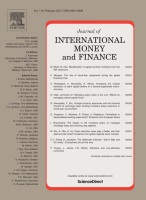
The relationship between bank size and the propensity to lend to small firms: New empirical evidence from a large sample
Abstract
Small and medium-sized enterprises, in aggregate, are the biggest employer in most countries, accounting for about two thirds of all employment in the UK, and an even greater proportion in Germany and Japan. Small firms are largely dependent on bank credit for external funding. This paper examines the question whether there is a significant relationship between bank size and customer size and whether bigger or smaller banks are more likely to be helpful to small and very small businesses in terms of providing loans. Using data on over 14,000 active and inactive U.S. banks of all sizes, from 1994 to 2013, utilising over 178,000 observations, we conduct hitherto the largest empirical examination of this question, applying a new and superior methodology that resolves prior controversies. The results are robust and indicate an inverse relationship between bank size and the propensity of banks to lend to small businesses. We thus contribute towards settling a long-standing debate about the influence of bank size on bank finance for small firms. Policy implications are discussed, such as the importance of a diverse and decentralised banking sector that includes a large number of small banks, such as exists in the US (but not in the UK), in order to help overcome growth constraints on small and micro businesses.
Banks and Economic Growth: The General Theory in a Basic Disequilibrium Model with Five Rationing Regimes
Abstract
In this paper, an inductive research methodology and the principle of parsimony are applied to reconsider a central issue in economics and macro-finance, namely the determinants of economic growth and the role of the financial sector. A simple framework is derived, characterised by information imperfections and the absence of market clearing. The literature on rationing has identified the need to consider differing rationing regimes but has not included a banking sector. Such a set-up is presented in this paper, which identifies the link between credit and economic growth under differing rationing regimes, with varying consequences for inflation. The familiar case of money creation resulting in inflation features as a special case within the general framework. Others are the possibility of asset price bubbles and collapses, non-inflationary growth despite full employment, and instability in banking systems. The model is consistent with empirical evidence that has been difficult to reconcile with conventional equilibrium models. It is found that within this simple rationing framework, banks, left to their own devices, do not necessarily deliver stable, non-inflationary growth, and there is no reason to expect their behaviour to optimise social welfare. Some implications for research and policy are discussed.
Keywords: banking; credit; development; equation of exchange; finance and growth; growth; growth accounting; quantity equation
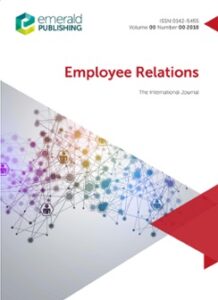
Subsidiarity as Secret of Success: ‘Hidden Champion’ SMEs and Subsidiarity as Winning HRM Configuration in Interdisciplinary Case Studies
Abstract
Purpose
Design/methodology/approach
Findings
Research limitations/implications
Practical implications
Social implications
Originality/value
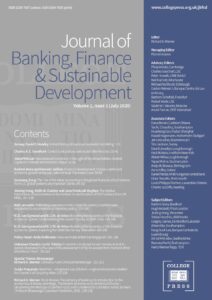
Obituary: Hans Christoph Binswanger, a true economist and social scientist
Abstract
Hans Christoph Binswanger, 1929-2018, was a professor of economics at the University of St. Gallen, Switzerland. His major interests and contributions were in the areas of macroeconomics, monetary economics, growth economics, development economics, ecological economics and the history of economic thought. He also made significant contributions to the field of economics and literature, as well as taxation. He was a co-founder of the Institute for Economy and Ecology at the University of St. Gallen and headed it from to 1992 to 1995. He co-founded the (German-language) association of ecological economics. He was awarded many prizes and his impact on society was significant, not least via his impact in the area of literature, through which he reached a broad audience. Professor Binswanger recognised the role of banks as creators of money and criticised the fictional economic theories that fail to include a central role for money, banking and credit. One of his best-known books is Money and Magic, recently re-published in English with a foreword by Lord Adair Turner (Binswanger, 2016), in which he contends (and argues that Goethe contended) that the modern economy is the human attempt to achieve eternity, via the alchemical (i.e. ‘magic’ and deceptive) monetary process, which results in dislocations and harm to the environment, but is ultimately doomed to failure
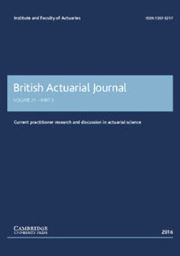
Sustainability and the financial system – Review of Literature
Much actuarial work is underpinned by the use of economic models derived from mainstream academic theories of finance and economics which treat money as being a neutral medium of exchange. The sustainability of a financial system whose understanding is based on a limited view of the role of money has increasingly been subject to criticism. In order to identify needed research programmes to address such criticisms and improve these disciplines, we sought to understand the current state of knowledge in economics and finance concerning the link between monetary and financial factors and sustainability. We have approached this through a search for relevant literature published in the highest-rated academic journals in economics, finance and the social sciences for titles and abstracts containing both references to the financial system on the one hand, and sustainability and environmental factors on the other. The systematic search of a universe of 125 journals and 355,000 articles yielded the finding that surprisingly few research papers jointly address these concepts. Nevertheless, we find that current research shares a broad consensus that the implications of the growth-oriented economic model results in an increasingly interconnected and fragile financial system whose participants are not incentivised to fully recognise the natural environment and resource constraints. We further observe that the prescriptions offered are relatively limited and small-scale in their outlook and that there is a vital need for further research, particularly for actuaries who are required to take a longer-term outlook. The Resource and Environment Board has supported this work with two key objectives: first, to identify research that may have direct application to actuarial work and, second, to identify gaps in academic research that would help drive the Institute and Faculty of Actuaries’ own research agenda. With this in mind there are three further areas of potential actuarial research. These are the policy aim of pursuing growth without limit within a finite ecosystem; discount factors as the primary means of capital allocation and investment decisions; and the use of gross domestic product as the key metric of economic activity and success. We also conclude that further academic research is urgently needed to understand the sustainability of the banking and monetary system.
Keywords:
Banking; Finance; Monetary Policy; Sustainability; Green Economy
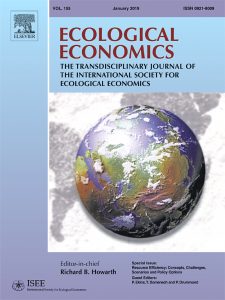
Reconsidering Monetary Policy: An Empirical Examination of the Relationship Between Interest Rates and Nominal GDP Growth in the U.S., U.K., Germany and Japan
Abstract
The rate of interest – the price of money – is said to be a key policy tool. Economics has in general emphasised prices. This theoretical bias results from the axiomatic-deductive methodology centring on equilibrium. Without equilibrium, quantity constraints are more important than prices in determining market outcomes. In disequilibrium, interest rates should be far less useful as policy variable, and economics should be more concerned with quantities (including resource constraints). To investigate, we test the received belief that lower interest rates result in higher growth and higher rates result in lower growth. Examining the relationship between 3-month and 10-year benchmark rates and nominal GDP growth over half a century in four of the five largest economies we find that interest rates follow GDP growth and are consistently positively correlated with growth. If policy-makers really aimed at setting rates consistent with a recovery, they would need to raisethem. We conclude that conventional monetary policy as operated by central banks for the past half-century is fundamentally flawed. Policy-makers had better focus on the quantity variables that cause growth.
JEL Classifications
Keywords

Does Foreign Direct Investment Generate Economic Growth? A New Empirical Approach Applied to Spain
By Jorge Bermejo Carbonell and Richard A. Werner
It is often asserted with confidence that foreign direct investment (FDI) is beneficial for economic growth in the host economy. Empirical evidence has been mixed, and there remain gaps in the literature. The majority of FDI has been directed at developed countries. Single-country studies are needed, due to the heterogeneous relationship between FDI and growth, and because the impact of FDI on growth is said to be largest in open, advanced developed countries with an educated workforce and developed financial markets (although research has focused on developing countries). We fill these gaps with an improved empirical methodology to check whether FDI has enhanced growth in Spain, one of the largest receivers of FDI, whose gross domestic product growth was above average but has escaped scrutiny. During the observation period 1984–2010, FDI rose significantly, and Spain offered ideal conditions for FDI to unfold its hypothesized positive effects on growth. We run a horse race between various potential explanatory variables, including the neglected role of bank credit for the real economy. The results are robust and clear: The favorable Spanish circumstances yield no evidence for FDI to stimulate economic growth. The Spanish EU and euro entry are also found to have had no positive effect on growth. The findings call for a fundamental rethinking of methodology in economics.
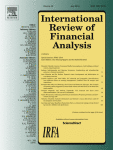
A lost century in Economics: Three theories of banking and the conclusive evidence
Highlights
- • The three theories of how banks function and whether they create money are reviewed
- • A new empirical test of the three theories is presented
- • The test allows to control for all transactions, delivering clear-cut results.
- • The fractional reserve and financial intermediation theories of banking are rejected
- • Capital adequacy based bank regulation is ineffective, credit guidance preferable
- • This is shown with the case study of Barclays Bank creating its own capital
- • Questions are raised concerning the lack of progress in economics in the past century
- • Policy implications: borrowing from abroad is unnecessary for growth
Abstract
How do banks operate and where does the money supply come from? The financial crisis has heightened awareness that these questions have been unduly neglected by many researchers. During the past century, three different theories of banking were dominant at different times: (1) The currently prevalent financial intermediation theory of banking says that banks collect deposits and then lend these out, just like other non-bank financial intermediaries. (2) The older fractional reserve theory of banking says that each individual bank is a financial intermediary without the power to create money, but the banking system collectively is able to create money through the process of ‘multiple deposit expansion’ (the ‘money multiplier’). (3) The credit creation theory of banking, predominant a century ago, does not consider banks as financial intermediaries that gather deposits to lend out, but instead argues that each individual bank creates credit and money newly when granting a bank loan. The theories differ in their accounting treatment of bank lending as well as in their policy implications. Since according to the dominant financial intermediation theorybanks are virtually identical with other non-bank financial intermediaries, they are not usually included in the economic models used in economics or by central bankers. Moreover, the theory of banks as intermediaries provides the rationale for capital adequacy-based bank regulation. Should this theory not be correct, currently prevailing economics modelling and policy-making would be without empirical foundation. Despite the importance of this question, so far only one empirical test of the three theories has been reported in learned journals. This paper presents a second empirical test, using an alternative methodology, which allows control for all other factors. The financial intermediation and the fractional reserve theories of banking are rejected by the evidence. This finding throws doubt on the rationale for regulating bank capital adequacy to avoid banking crises, as the case study of Credit Suisse during the crisis illustrates. The finding indicates that advice to encourage developing countries to borrow from abroad is misguided. The question is considered why the economics profession has failed over most of the past century to make any progress concerning knowledge of the monetary system, and why it instead moved ever further away from the truth as already recognised by the credit creation theory well over a century ago. The role of conflicts of interest and interested parties in shaping the current bank-free academic consensus is discussed. A number of avenues for needed further research are indicated.
JEL classification
Keywords

An analytical review of volatility metrics for bubbles and crashes
Highlights
- Surveys previous significant studies on bubbles, crashes, and volatility
- Why do prices become secondary to quantity via the short-side rationed principle
- Adds new perspectives on defining and measuring bubbles, crashes, and volatility
- Introduces an extreme events line (EEL) and a crash intensity indicator
Abstract
Bubbles and crashes have long been an important area of research that has not yet led to a comprehensive theoretical or empirical understanding of how to define, measure, and compare such extreme market events. Highlights of the vast literature on bubbles, crashes, and volatility are surveyed and a promising direction for future research, based on a theory of short-side rationing, is described. The theory suggests that, especially in extreme market conditions, marginal quantities held or not held become transactionally more important than the prices paid or received. Our approach is empirically implemented by fitting monthly elasticity of return variances to an exponential expression. From this follows a comparison of changes in implied versus realized volatility, generation of an extreme events line (EEL), and a crash intensity comparison metric. These methods open a new perspective from which it is possible to analyze bubble and crash events as applied to different time scales and asset classes that include bonds, real estate, foreign exchange, and commodities.
Keywords
Bubbles; Crashes; Elasticity of variance; Extreme events line; Herding; Tranquility zone; Volatility

A lost century in economics: Three theories of banking and the conclusive evidence
Highlights
- The three theories of how banks function and whether they create money are reviewed
- A new empirical test of the three theories is presented
- The test allows to control for all transactions, delivering clear-cut results.
- The fractional reserve and financial intermediation theories of banking are rejected
- Capital adequacy based bank regulation is ineffective, credit guidance preferable
- This is shown with the case study of Barclays Bank creating its own capital
- Questions are raised concerning the lack of progress in economics in the past century
- Policy implications: borrowing from abroad is unnecessary for growth
Abstract
How do banks operate and where does the money supply come from? The financial crisis has heightened awareness that these questions have been unduly neglected by many researchers. During the past century, three different theories of banking were dominant at different times: (1) The currently prevalent financial intermediation theory of banking says that banks collect deposits and then lend these out, just like other non-bank financial intermediaries. (2) The older fractional reserve theory of banking says that each individual bank is a financial intermediary without the power to create money, but the banking system collectively is able to create money through the process of ‘multiple deposit expansion’ (the ‘money multiplier’). (3) The credit creation theory of banking, predominant a century ago, does not consider banks as financial intermediaries that gather deposits to lend out, but instead argues that each individual bank creates credit and money newly when granting a bank loan. The theories differ in their accounting treatment of bank lending as well as in their policy implications. Since according to the dominant financial intermediation theory banks are virtually identical with other non-bank financial intermediaries, they are not usually included in the economic models used in economics or by central bankers. Moreover, the theory of banks as intermediaries provides the rationale for capital adequacy-based bank regulation. Should this theory not be correct, currently prevailing economics modelling and policy-making would be without empirical foundation. Despite the importance of this question, so far only one empirical test of the three theories has been reported in learned journals. This paper presents a second empirical test, using an alternative methodology, which allows control for all other factors. The financial intermediation and the fractional reserve theories of banking are rejected by the evidence. This finding throws doubt on the rationale for regulating bank capital adequacy to avoid banking crises, as the case study of Credit Suisse during the crisis illustrates. The finding indicates that advice to encourage developing countries to borrow from abroad is misguided. The question is considered why the economics profession has failed over most of the past century to make any progress concerning knowledge of the monetary system, and why it instead moved ever further away from the truth as already recognised by the credit creation theory well over a century ago. The role of conflicts of interest and interested parties in shaping the current bank-free academic consensus is discussed. A number of avenues for needed further research are indicated.
Keywords
Bank accounting; Bank credit; Credit creation; Economics; Financial intermediation; Foreign borrowing; Fractional reserve banking; Money creation
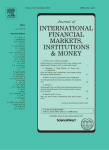
A half-century diversion of monetary policy? An empirical horse-race to identify the UK variable most likely to deliver the desired nominal GDP growth rate
Highlights
- Post-crisis monetary policy has struggled to stimulate nominal demand.
- We model UK nominal GDP growth over 50 years with past monetary policy targets.
- The ‘general-to-specific’ methodology is used to find the best explanatory variables.
- Bank credit for GDP-transactions explains nominal GDP best.
- Interest rates and money aggregates do not influence nominal GDP significantly.
Abstract
The financial crisis of 2007–2008 triggered monetary policy designed to boost nominal demand, including ‘Quantitative Easing’, ‘Credit Easing’, ‘Forward Guidance’ and ‘Funding for Lending’. A key aim of these policies was to boost the quantity of bank credit to the non-financial corporate and household sectors. In the previous decades, however, policy-makers had not focused on bank credit. Indeed, over the past half century, different variables were raised to prominence in the quest to achieve desired nominal GDP outcomes. This paper conducts a long-overdue horse race between the various contenders in terms of their ability to account for observed nominal GDP growth, using a half-century of UK data since 1963. Employing the ‘General-to-Specific’ methodology, an equilibrium-correction model is estimated suggesting a long-run cointegrating relationship between disaggregated real economy credit and nominal GDP. Short-term and long-term interest rates and broad money do not appear to influence nominal GDP significantly. Vector autoregression and vector error correction modelling shows the real economy credit growth variable to be strongly exogenous to nominal GDP growth. Policy-makers are hence right to finally emphasise the role of bank credit, although they need to disaggregate it and specifically target bank credit for GDP-transactions.
Keywords
Bank credit; Credit channel; General-to-specific method; Growth; Monetary policy transmission; Quantitative Easing; Quantity Theory of Credit

How do banks create money, and why can other firms not do the same? An explanation for the coexistence of lending and deposit-taking
Abstract
Thanks to the recent banking crises interest has grown in banks and how they operate. In the past, the empirical and institutional market micro-structure of the operation of banks had not been a primary focus for investigations by researchers, which is why they are not well covered in the literature. One neglected detail is the banks’ function as the creators and allocators of about 97% of the money supply (Werner, 1997 and Werner, 2005), which has recently attracted attention (Bank of England, 2014a, Bank of England, 2014b, Werner, 2014b and Werner, 2014c). It is the purpose of this paper to investigate precisely how banks create money, and why or whether companies cannot do the same. Since the implementation of banking operations takes place within a corporate accounting framework, this paper is based upon a comparative accounting analysis perspective. By breaking the accounting treatment of lending into two steps, the difference in the accounting operation by bank and non-bank corporations can be isolated. As a result, it can be established precisely why banks are different and what it is that makes them different: They are exempted from the Client Money Rules and thus, unlike other firms, do not have to segregate client money. This enables banks to classify their accounts payable liabilities arising from bank loan contracts as a different type of liability called ‘customer deposits’. The finding is important for many reasons, including for modelling the banking sector accurately in economic models, bank regulation and also for monetary reform proposals that aim at taking away the privilege of money creation from banks. The paper thus adds to the growing literature on the institutional details and market micro-structure of our financial and monetary system, and in particular offers a new contribution to the literature on ‘what makes banks different’, from an accounting and regulatory perspective, solving the puzzle of why banks combine lending and deposit-taking operations under one roof.
Keywords
Bank accounting; Bank lending; Client money rules; Credit creation; Loans; Monetary reform
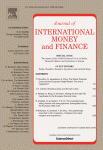
Enhanced Debt Management: Solving the eurozone crisis by linking debt management with fiscal and monetary policy
Abstract
Unconventional approaches to suit unusual circumstances have become acceptable in monetary policy, a formerly highly conservative discipline. In this paper it is argued that unconventional approaches should also be considered in sovereign debt management, in order to contribute to resolving the eurozone sovereign debt crisis. First, the Troika crisis lending to indebted sovereign borrowers in the eurozone is reviewed and compared with standard IMF post-crisis lending. The main difference and shortcoming is the unsustainable character of the eurozone approach, due to the omission of demand stimulation components. To address this and other shortcomings, the features of an ideal alternative funding tool are identified. It would solve the funding problems of affected sovereigns, help stabilise the banking system, but most of all stimulate domestic demand and hence end the vicious downward spiral. It is found that this funding method can be implemented as part of enhanced public debt management by each nation’s debt management office.
Keywords
Bank credit; Credit creation; Enhanced Debt Management; Public debt management; Quantitative Easing; Quantity Theory of Credit

Can banks individually create money out of nothing? — The theories and the empirical evidence
Abstract
This paper presents the first empirical evidence in the history of banking on the question of whether banks can create money out of nothing. The banking crisis has revived interest in this issue, but it had remained unsettled. Three hypotheses are recognised in the literature. According to the financial intermediation theory of banking, banks are merely intermediaries like other non-bank financial institutions, collecting deposits that are then lent out. According to the fractional reserve theory of banking, individual banks are mere financial intermediaries that cannot create money, but collectively they end up creating money through systemic interaction. A third theory maintains that each individual bank has the power to create money ‘out of nothing’ and does so when it extends credit (the credit creation theory of banking). The question which of the theories is correct has far-reaching implications for research and policy. Surprisingly, despite the longstanding controversy, until now no empirical study has tested the theories. This is the contribution of the present paper. An empirical test is conducted, whereby money is borrowed from a cooperating bank, while its internal records are being monitored, to establish whether in the process of making the loan available to the borrower, the bank transfers these funds from other accounts within or outside the bank, or whether they are newly created. This study establishes for the first time empirically that banks individually create money out of nothing. The money supply is created as ‘fairy dust’ produced by the banks individually, “out of thin air”.
Keywords
Bank credit; Credit creation; Financial intermediation; Fractional reserve banking; Money creation
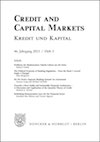
Towards a More Stable and Sustainable Financial Architecture – A Discussion and Application of the Quantity Theory of Credit
Abstract
Thanks to the banking crisis, there has been a greater awareness that leading economic theories and models, as well as influential advanced textbooks in macroeconomics and monetary economics may have been amiss when they neglected to include banks in their analyses. Economists are now labouring to include banking in their models. However already sixteen years ago a paper was published in this journal which presented probably the simplest possible framework that incorporates the economic consequences of banking into a macroeconomic framework: The ‘Quantity Theory of Credit’ (QTC, Werner (1997)). It resolves a number of perceived ‘anomalies’ in macroeconomics and finance, can be used to explain and predict banking crises, and carries a number of policy implications about how to enhance financial stability and deliver sustainable growth. Unlike many better known and far more complex models and theories, it has fared well during the turbulent period since it was proposed. In this paper QTC is revisited and a number of questions that have been raised in the profession concerning it are discussed. It is then applied to the following questions: how to detect and avoid banking crises; how to deliver sustainable and stable economic growth; how to end post-crisis recessions quickly – such as those in many European economies – while minimising costs to the tax payer; and finally, what a financial architecture would look like that has a higher chance of delivering the latter goals on a regular basis.

Towards a new research programme on ‘banking and the economy’ — Implications of the Quantity Theory of Credit for the prevention and resolution of banking and debt crises
Abstract
The financial crisis has triggered a new consensus among economists that it is necessary to include a banking sector in macroeconomic models. It is also necessary for the finance and banking literature to consider how best to incorporate systemic, macroeconomic feedbacks into its modelling of financial intermediation. Thus a new research programme on the link between banking and the economy is needed. This special issue is devoted to this theme. In this paper an overview of the issues and problems in the economics and finance literature is presented, and a concrete, simple approach is identified of how to incorporate banks into a macroeconomic model that solves many of these issues. The model distinguishes between the type of credit that boosts GDP and credit that is associated with asset prices and banking crises. The model is consistent with the empirical record. Some applications are discussed, namely the prediction and prevention of banking crises, implications for fiscal policy, and a solution to the European sovereign debt crisis that stimulates growth while avoiding the corner solutions of euro exit or fiscal union.
Keywords
Bank credit; Banking and the economy; Credit creation; Disaggregation of credit; Methodology; Quantity equation; Macroeconomics; Quantity Theory of Credit

Lessons from the Bank of England on ‘quantitative easing’ and other ‘unconventional’ monetary policies
Abstract
This paper investigates the effectiveness of the ‘quantitative easing’ policy, as officially implemented by the
Bank of England since March 2009. A policy of the same name had previously been implemented in Japan,
which serves as a reference. While the majority of the previous literature has measured the effectiveness of
QE by its impact on interest rates, in this paper the effectiveness of all Bank of England policies, including QE,
is measured by their impact on the declared goal of the QE policy, namely nominal GDP growth. Further,
unlike other works on policy evaluation, in this paper we use the general-to-specific econometric modelling
methodology (a.k.a. the ‘Hendry’ or ‘LSE’ methodology) in order to determine the relative importance of Bank
of England policies, including QE. The empirical analysis indicates that QE as defined and announced in March
2009 had no apparent effect on the UK economy. Meanwhile, it is found that a policy of ‘quantitative easing’
as defined in the original sense of the term (Werner, 1995c) is supported by empirical evidence: a stable
relationship between a lending aggregate (disaggregated M4 lending, singling out bank credit for GDP
transactions) and nominal GDP is found. The findings imply that the central bank should more directly target
the growth of bank credit for GDP-transactions, which was still contracting in late 2011. A number of
measures exist to boost it, but they have hitherto not been taken.
JEL classifications:
E41
E52
E58
Keywords:
Central banking
Credit creation
General-to-specific methodology
Intermediate targets
Monetary policy
Operating tools
Qualitative easing
Quantitative easing
QE
Zero bound
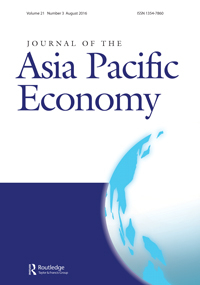
The Role of Monetary Aggregates in Chinese Monetary Policy Implementation
Monetary targeting has been abandoned in deregulated and liberalized financial systems. Theoretically, this could imply that emerging markets that have not yet deregulated financial markets could employ monetarist policies. We analyse the case of China, in order to explore whether monetary targeting was in theory a possible policy framework for the central bank, and to glean policy lessons for emerging markets. Employing Svensson’s criteria for the selection of intermediate targets, we find that a measure such as M1 fulfils the criteria and can serve as an intermediate target. However, it is also found that the relatively small error between monetary target and actual variables may be due to alternative monetary policy procedures, in particular, the use of ‘window guidance’ credit controls. Next, we test the relevance of the McCallum rule in China, which appears more relevant than the Taylor rule. In particular, we find that the actual movement of M1 fits the McCallum rule reasonably well, even during the high inflation period from 1992 to 1994. This suggests that before the official adoption of M1 as the intermediate target in 1994, the People’s Bank of China may have already been ‘practising’ its use by implicitly following the McCallum rule. It is also found that monetary policy was too loose during 1992–1994 and a little too tight during 1998–2002. We conclude that an analysis of the traditional monetary aggregates is insufficient, and research on the role of credit aggregates would appear to be more promising. Meanwhile, policy lessons from our study include that central banks, even in emerging markets that maintain relatively regulated and ‘repressed’ financial markets, cannot rely too much on quantitative monetary aggregates, if traditionally defined.
Economics as if Banks Mattered - A Contribution based on the Inductive Methodology
Introduction
Alan Greenspan confessed in 2008 to recognizing a ‘flaw’ in mainstream approaches to how financial markets work (Congress, 2010). Donald Kohn (2009), as Vice-Chairman of the Federal Reserve, admitted:
“It is fair to say . . . that the core macroeconomic modelling framework used at the Federal Reserve and other central banks around the world has included, at best, only a limited role for . . . credit provision, and financial intermediation. . . . asset price movements and the feedback among those movements, credit supply, and economic activity were not well captured by the models used at most central banks.”
The research agenda which culminated in macromodels without banks (Walsh, 2003), without monetary aggregates (Woodford, 2003), or without a financial sector (most real business cycle and dynamic stochastic general equilibrium models), has not been successful.
Macroeconomics has proceeded down the wrong path. In order to find the right one, we need to return to the crossroads at which it was taken. In the 1980s, the prevailing approaches faced deep problems. At the time, classical, many neoclassical, Keynesian, monetarist, post-Keynesian and many eclectic approaches shared one fundamental pillar linking money (M) to the economy: the ‘equation of exchange’ or ‘quantity equation’:
MV = PY (1)
For monetary policy purposes, to explain and forecast GDP (Y) and prices (P), as well as to estimate the money demand function, a stable velocity V was required. This stability was the thread on which macroeconomics hung. It held up for a while, but increasingly a ‘velocity decline’ was observed: nominal GDP did not grow as much as the money supply.
While the velocity decline has accelerated in many countries since, economists have turned away from the problem—not because a solution had been found, but because they had given
up searching for an answer. This was precisely the time when the moneyless economic models became increasingly attractive to economists. They were a form of escapism:
instead of rising to the empirical challenge to improve on their understanding of the monetary sector, economists chose to pretend that money and banks did not exist and had no influence on the economy. This was possible thanks to the prevalence of the hypothetico-deductive approach, which places little emphasis on empirical facts.
The new moneyless economics however merely produced further empirical puzzles and ‘anomalies’ which by today have also discredited it: ‘The notion that there is something about banks that makes them “special” is a recurrent theme’ (Blanchard and Fischer, 1989, p. 478), one that is empirically well supported (e.g. Peek and Rosengren, 2000; Ashcraft, 2005; Werner, 2005; see also Fama, 1985). However, economists failed to identify what makes banks special. So the recurring banking crises have remained unexplained as well—a highly visible and embarrassing refutation of moneyless and bank-less macroeconomics.
There is a future for macroeconomics, if it can explain the many and major empirical puzzles. Below I suggest a solution that has performed well empirically. It also has the advantage of being simpler: the principle of parsimony holds that a simpler explanation, relying on fewer assumptions, is preferable to a more complex one. Finally, it is not based on the deductive methodology, which was instrumental in leading macroeconomics into a cul-de-sac.
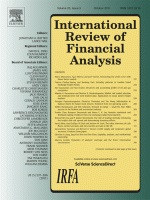
Credit Supply and Corporate Capital Structure: Evidence from Japan
Abstract
In this paper we examine how financial constraints, especially fluctuations in the supply of credit, affect the capital structure of 1537 publicly listed Japanese firms from 1980 to 2007, in a data set with 33,000 observations. It is one of the first studies to do so and is inspired by the recent studies of Leary (2009) and Faulkender and Petersen (2006). Japan was selected due to the extreme credit supply fluctuations observed during the last 30 years. It thus offers an ideal natural experiment to test the impact of credit supply on corporate capital structure. In particular, in our panel data study we investigated the impact of the asset bubble in the 1980s and the credit crunch of the late 1990s on corporate capital structure decisions. The results of this paper show, among other findings, that financial policy decisions are indeed influenced by monetary conditions and the supply of credit. In particular, smaller sized firms face financial constraints, especially during economic downturns.
Financial Crises in Japan during the 20th Century

‘No Recovery without Reform? An Empirical Evaluation of the Structural Reform Argument in Japan’
Abstract
Conventional wisdom among many economists, central bankers, financial journalists and politicians holds that Japan must implement ‘badly needed structural reforms’ (to quote from the Financial Times). ‘No recovery without structural reform’, proclaims Prime Minister Koizumi. Japan’s case is also used to advance similar reforms in other countries and regions, such as Germany, where they have already become a main plank of the government’s policies. Given this overwhelming consensus, it is tempting to assume that the structural reform theory has been thoroughly subjected to empirical tests and found to be clearly supported. However, such empirical examination has so far been lacking. This paper analyses the empirical record and tests the neo-classical theories on which the structural reform case rests. It comes to the surprising finding that there is no factual support for the structural reform argument. Supply-side factors were not responsible for Japan’s recession. An alternative demand-side explanation, focusing on credit creation, is found supported by the evidence.
Keywords
actual growth
capacity utilization
credit creation
potential growth
productivity
structural reform
Response to William W. Grimes, "Comment on Richard Werner's 'The Enigma of Japanese Policy Ineffectiveness: The Limits of Traditional Approaches, Not Cyclical Policy'"
Aspects of Career Development and Information Management Policies at the Bank of Japan – a Frank Interview with a Former Central Banker
The use of eyewitness accounts to establish institutional details is common practice in many disciplines of the social sciences. While Adam Smith claims to draw on his experience of having visited a pin factory to describe the benefits of the division of labor, much of the discipline of economics has been beholden to the deductivist research methodology, which places little emphasis on the gathering and analysis of empirical data in the formulation of economic theories. However, there is a long history of inductivist economics, especially in continental Europe. Moreover, leading economists in the United States have recently stepped up their efforts to engage in fieldwork.’ In area studies, where country-specific features need to be explored, the concept of fieldwork is naturally far more widespread, such as in the context of an examination of Japanese economic institutions. Examples for the use of interviews in research on the Japanese economy include the interview with Miyohei Shinohara in Amsden (2001), or the extensive use of interviews to establish details of monetary policy implementation during the 1980s and early 1990s in Richard Werner (1999, 2002, 2003). The present paper adds to this growing strand of literature by contributing a frank interview with a former senior Japanese central bank official.
The "Enigma" of Japanese Policy Ineffectiveness The Limits of Traditional Approaches, Not Cyclical Policy
Post-Crisis Banking Sector Restructuring and Its Impact on Economic Growth
Restructuring of the banking sector has been a major topic in Japan for at least a decade now. It is also a major and recurring topic for many policymakers in both the developed world and among developing countries. This paper examines the implications of post-crisis banking sector restructuring for economic growth. First, a relevant feature of banking activity is analyzed in a basic framework linking bank credit to the economy. Using this model, the common causes of banking crises are examined and policies on how to avoid them are suggested. Next, the dynamics of banking crises are examined and how traditional bank restructuring, as also often implemented under the auspices of international organizations, affects them. This includes an analysis of the impact of increased fiscal expenditures as part of bank reforms. Finally, a modified program of banking reform that avoids the problems of traditional policies and which considers macroeconomic stability is proposed.

Monetary Policy Implementation in Japan: What They Say vs. What they Do
Abstract
Since the 1970s, many central banks – including the Bank of England, the Bank of France, the Bank of Korea and the Bank of Japan – have announced that they have ceased direct credit controls. Researchers have tended to accept ‘what they say’, without gathering empirical evidence on ‘what they do’. The Bank of Japan announced that it was abandoning direct credit controls in 1982. Since then, the monetary policy literature on Japan has focussed on formal policy tools, such as interest rates. This paper presents empirical research on the actual implementation of monetary policy by the Japanese central bank. The emphasis is on the period in the mid‐ to late‐1980s when monetary policy was stimulatory and real‐estate‐related lending expanded rapidly, and the period in the early 1990s, when asset prices fell, resulting in the subsequent banking crisis and recession. The paper first briefly surveys the literature. Empirical research is then presented in three parts. Secondary sources are accessed to gain information on the mechanism of monetary policy conduct. New field work is then presented, which uses primary sources to probe the details of monetary policy implementation. Finally, econometric evidence is gathered to test various hypotheses concerning monetary policy procedures. The research successfully establishes the details and nature of the Bank of Japan’s monetary policy implementation during the 1980s and early 1990s. The findings suggest the need for a modification of the generally prevailing view, as well as the need for further research on the actual implementation of monetary policy in other countries.
A Reconsideration of the Rationale for Bank-Centered Economic Systems and the Effectiveness of Directed Credit Policies in the Light of Japanese Evidence
Directed credit is seen by recent literature as having contributed to high post-war economic growth in several Asian countries, including Japan, Korea, Taiwan, Thailand, and Indonesia. Its use, however, remains controversial. This paper adopts ex ante predictive power as criterion for the evaluation of the usefulness of theories and policies. For this purpose it attempts to identify the historical rationale of the credit direction policies adopted by Japan—the East Asian country that developed earliest and most successfully. It is found that Japan’s directed credit policymakers modeled their system on the practice of the Reichsbank, under its president Hjalmar Schacht in the 1920s, and the economic thought of German development economists at the time, who argued for a strong role of banks as conduits of official guidance within an overall growth-oriented institutional design. This paper provides some support for directed credit policies and offers an alternative explanation for the emergence of a bank-based financial system in Japan and other countries.
